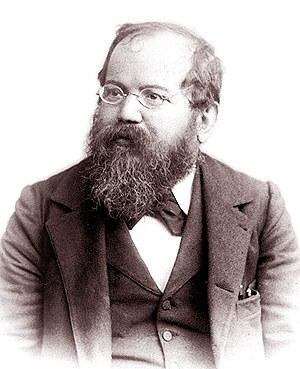The Latvian Gambit is a chess opening characterised by the moves:

The Evergreen Game is a famous chess game won by Adolf Anderssen against Jean Dufresne in 1852.
The Pirc Defence is a chess opening characterised by the response of Black to 1.e4 with 1...d6 and 2...Nf6, followed by ...g6 and ...Bg7, while allowing White to establish a centre with pawns on d4 and e4. It is named after the Slovenian grandmaster Vasja Pirc.

Fred Dewhirst Yates was an English chess master who won the British Chess Championship on six occasions. He started a career in accountancy, but in 1909, abandoned it in favour of becoming a professional chess player and journalist.
The Philidor Defence is a chess opening characterised by the moves:
The Frankenstein–Dracula Variation is a chess opening for Black, usually considered a variation of the Vienna Game, beginning with the moves:
The Torre Attack is a chess opening characterized by the moves:
Owen's Defence is an uncommon chess opening defined by the moves:
Rosendo Carreon Balinas Jr. was a chess grandmaster from the Philippines. FIDE awarded him the International Master title in 1975 and the International Grandmaster title in 1976. He was Philippines' second chess grandmaster. Balinas was a lawyer by profession, as well as an award winning chess writer and journalist.
Nolot is a chess test suite with 11 very difficult positions from real games. They were compiled by Pierre Nolot for the French chess magazine Gambisco and posted on the rec.games.chess Usenet group in 1994. Some of these positions were particularly hard to solve for chess engines at the time.
In chess, a desperado is a piece that is either en prise or trapped, but captures an enemy piece before it is itself captured in order to compensate the loss a little, or is used as a sacrifice that will result in stalemate if it is captured. The former case can arise in a situation where both sides have hanging pieces, in which case these pieces are used to win material prior to being captured. A desperado in the latter case is usually a rook or a queen; such a piece is sometimes also called crazy or mad.
John Alan Grefe was an American International Master of chess.

Deep Blue versus Garry Kasparov was a pair of six-game chess matches between then-world chess champion Garry Kasparov and an IBM supercomputer called Deep Blue. Kasparov won the first match, held in Philadelphia in 1996, by 4–2. Deep Blue won a 1997 rematch held in New York City by 3½–2½. The second match was the first defeat of a reigning world chess champion by a computer under tournament conditions, and was the subject of a documentary film, Game Over: Kasparov and the Machine.

The World Chess Championship 1886 was the first official World Chess Championship match contested by Wilhelm Steinitz and Johannes Zukertort. The match took place in the United States from 11 January to 29 March, the first five games being played in New York City, the next four being played in St. Louis and the final eleven in New Orleans. The winner was the first player to achieve ten wins. Wilhelm Steinitz won the match 10–5, winning his tenth game in the twentieth game of the match.

The World Chess Championship 1889 was the second official World Chess Championship, and was between Wilhelm Steinitz and Mikhail Chigorin. It took place in Havana, Cuba. Steinitz successfully defended his world title, by being the first of the two players to reach 10½. He won the match 10½-6½.

The Immortal Zugzwang Game is a chess game between Friedrich Sämisch and Aron Nimzowitsch, played in Copenhagen in March 1923. It gained its name because the final position is sometimes considered a rare instance of zugzwang occurring in the middlegame. According to Nimzowitsch, writing in the Wiener Schachzeitung in 1925, this term originated in "Danish chess circles".

The 1935 World Chess Championship was played between challenger Max Euwe and title-holder Alexander Alekhine. It was played in various cities and towns in the Netherlands from October 3 to December 16. Euwe was the winner by overcoming a three-point deficit as late as the ninth game.

The 1978 World Chess Championship was played between Anatoly Karpov and Viktor Korchnoi in Baguio, Philippines from July 18 to October 18, 1978. Karpov won, thereby retaining the title.
The Berlin Defence is a chess opening that begins with the moves:
The 19th season of the Top Chess Engine Championship began on 6 August 2020 and ended on 16 October 2020. The season 19 superfinal was a rematch between Stockfish and Leela Chess Zero, the same two engines that had contested the superfinal in the previous two seasons. Stockfish, the defending champion, won by 9 games.








